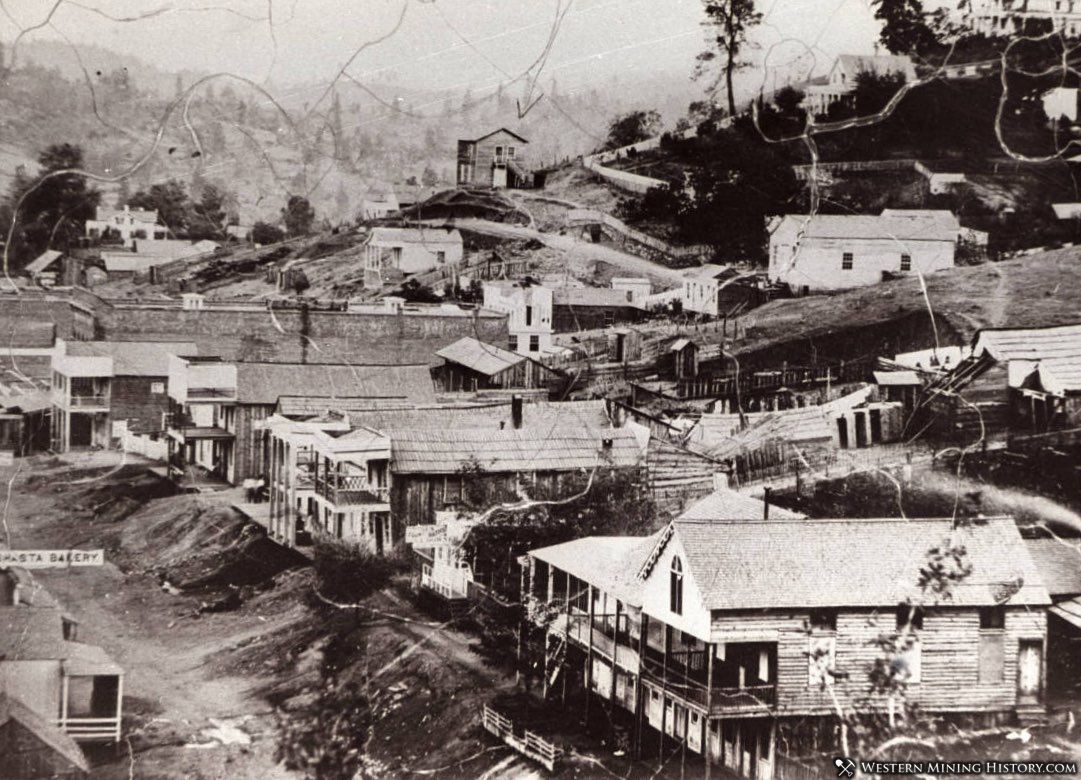Shasta History
Gold was discovered near the site that would become Shasta in the spring of 1849. The discovery was far north of the Mother Lode discoveries and sparked a second gold rush within California as miners from California and Oregon flooded into the newly discovered northern California gold fields.
The initial settlement was known as Reading's Springs and was a tent city of over 500 miners and merchants by October of 1849. In 1850 the settlement's name change to Shasta, and was often referred to as Shasta City. in 1851 the town became the county seat of Shasta County.
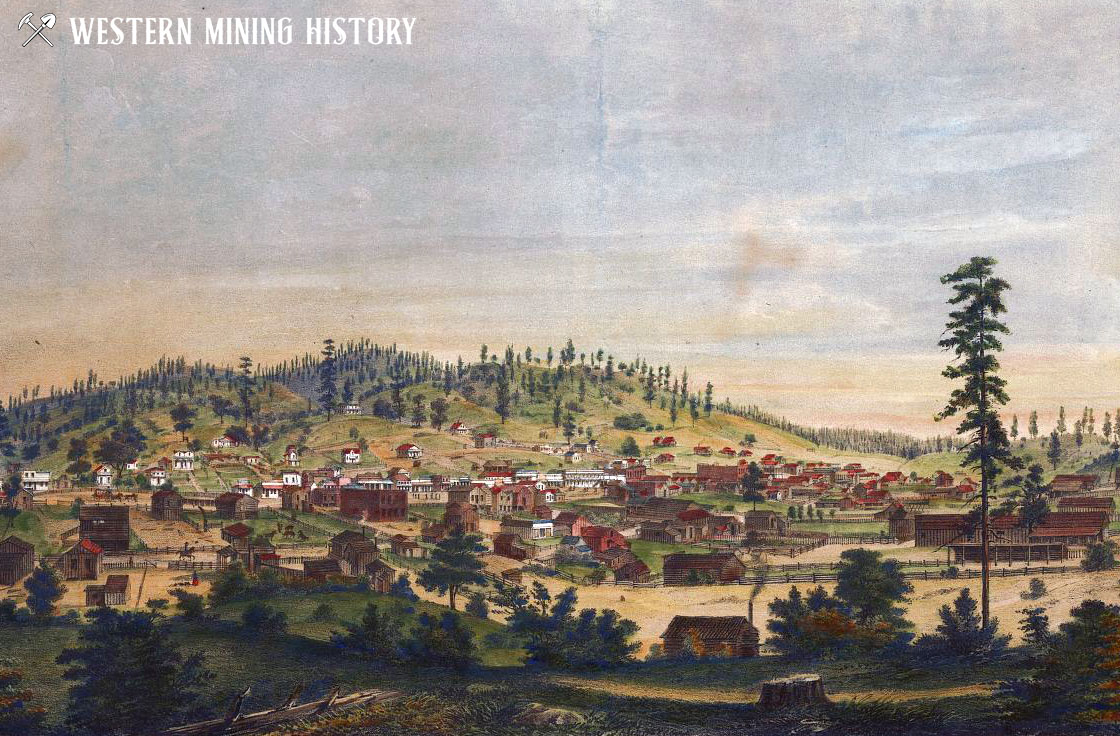
The camp was extremely isolated in what was nothing but California wilderness at this early date, with the only connection to the towns to the south being a mule trail over 180 miles long that lead to Sacramento.
With extremely high freighting costs to Shasta and resulting low quantities of food stored, the first winter at Shasta was a difficult one, and many at the isolated camp began to head back to the more established towns in the Mother Lode area in the central part of the state.
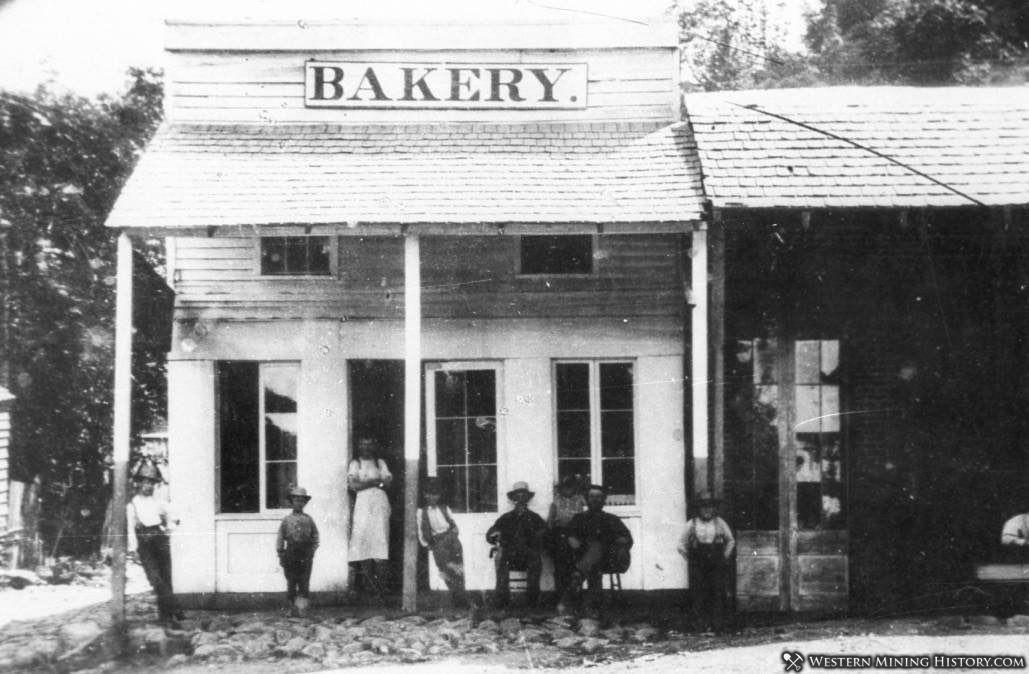
It wasn't until 1851 that the first road was built to the isolated region, and the first stagecoach rolled into town. It is difficult to imagine that this boom town of thousands existed for almost two full years supplied by nothing but pack trains, and that the arrival of the stagecoach was considered a major improvement in transportation at the time.
Shasta was both a mining camp and the gateway and supply center for the entire Trinity Diggins region which was being opened to the north. It was common for 100 freight teams to pass through Shasta in a single day. During the camps peak years between 1852 and 1857, it was reported that over $100,000 in gold dust passed through the town every week.
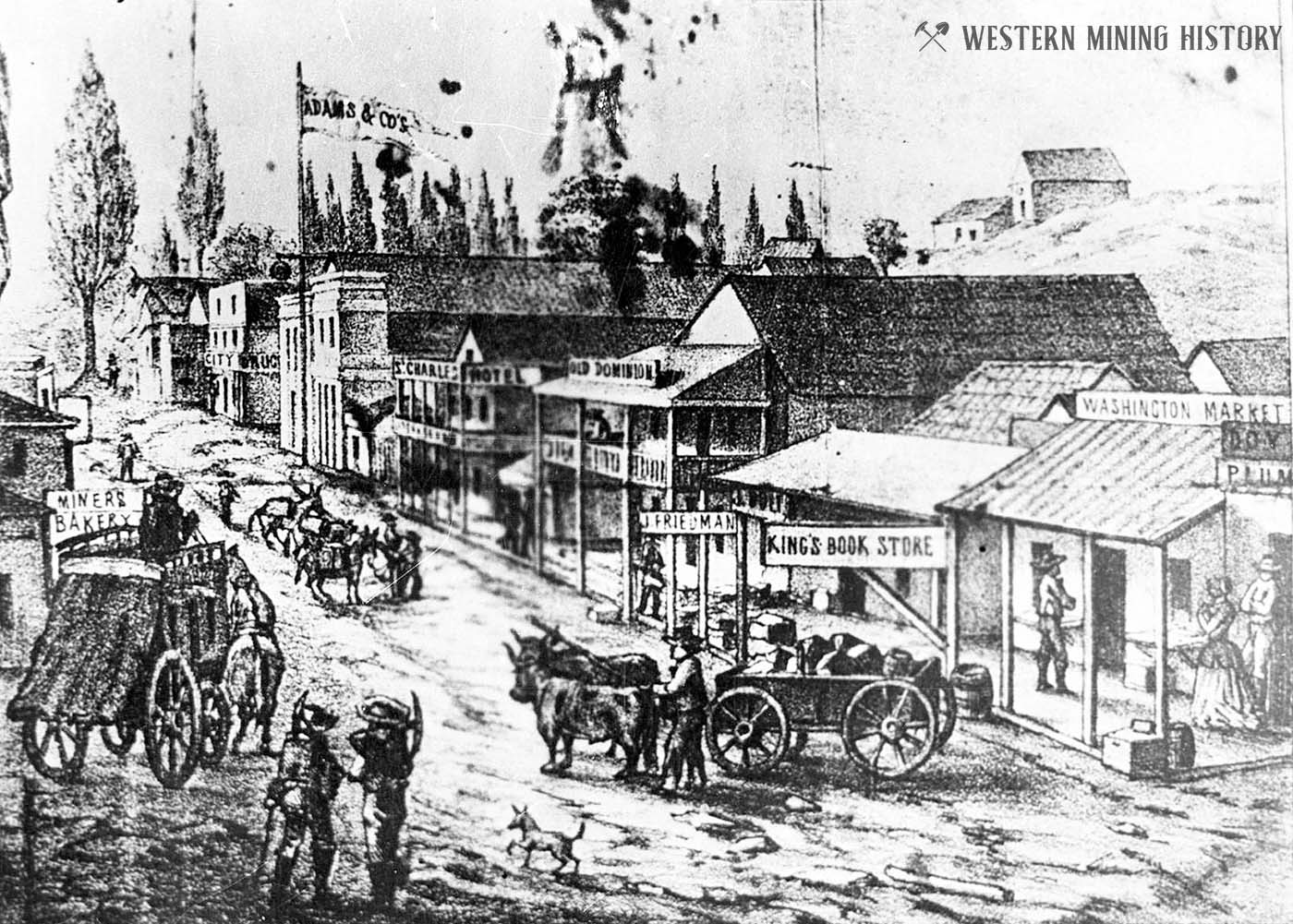
By 1852 there were seven hotels and the only post office in Shasta County. The primitive wood and canvas buildings that were still common in Shasta at this time resulted in most of the town burning in 1852 and again in 1853. After the second fire, brick construction became more common and more permanent structures were built.
Shasta was said to have nine cemeteries by 1855, a figure that highlights the number of fatalities that occurred at this remote outpost due to accidents, violence, disease, and conflicts with hostile natives.
In 1872 Shasta was bypassed by the first rail line into the region, resulting in the town no longer being the primary transportation hub for the northern mines. Shasta was diminished as a city by the mid 1870's, but was still active. A newspaper article from June of 1878 describes the town at that time:
One of the Charms of Shasta City At present, in its quiet and yet hopeful days, consists in its society. The people are kind, social and intelligent, good neighbors and warm-hearted friends.
The public school is under the charge of Mrs. D.M. Coleman, County Superintendent, a lady of rare tact, patience and ability, who has done much to improve the schools of the county. With decided popularity she has been repeatedly elected to her responsible office. The present population of Shasta City is about 1,000.
Business is decidedly improving, owing to the discovery of many fine quartz ledges and new diggings in the vicinity. It can hardly be doubted that the real mineral wealth of Shasta is as yet undeveloped, and, according to the hopes of its citizens, only awaits the introduction of capital to bring back the golden days of old.
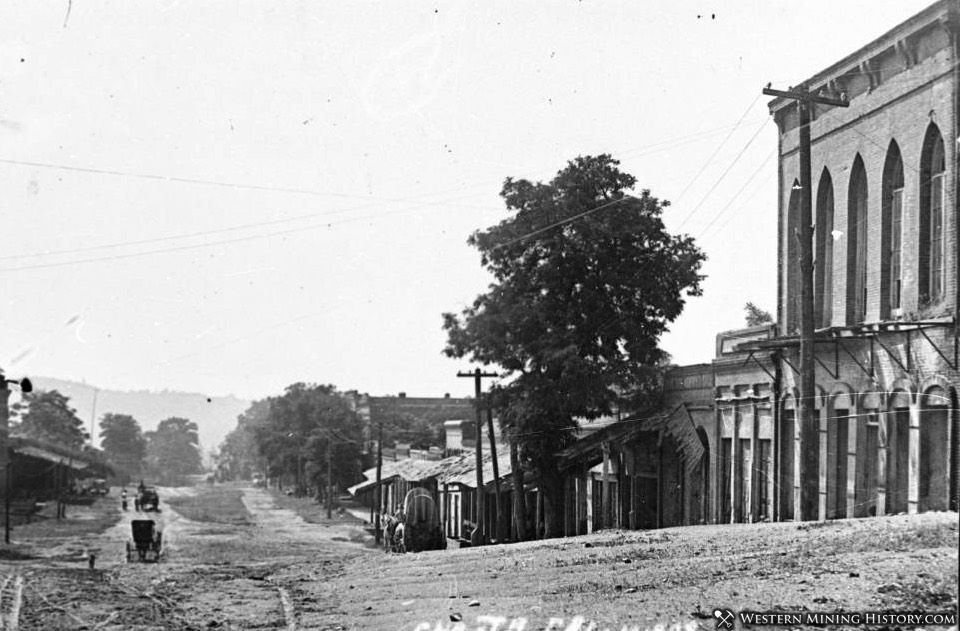
In 1888, Shasta lost the county seat to Redding. The original town faded over the years and was abandoned. The town site of Old Shasta is now preserved as the Shasta State Historic Part.
*Note that reports on peak populations of mining camps often widely vary, especially among those that peaked at such early periods and in such remote territory as Shasta. The figure of 6,000 was obtained from "The Resources and History of Shasta County No. 1" printed by the newspaper Pacific Rural Press in June of 1878.
It All Started With The Gold Rush
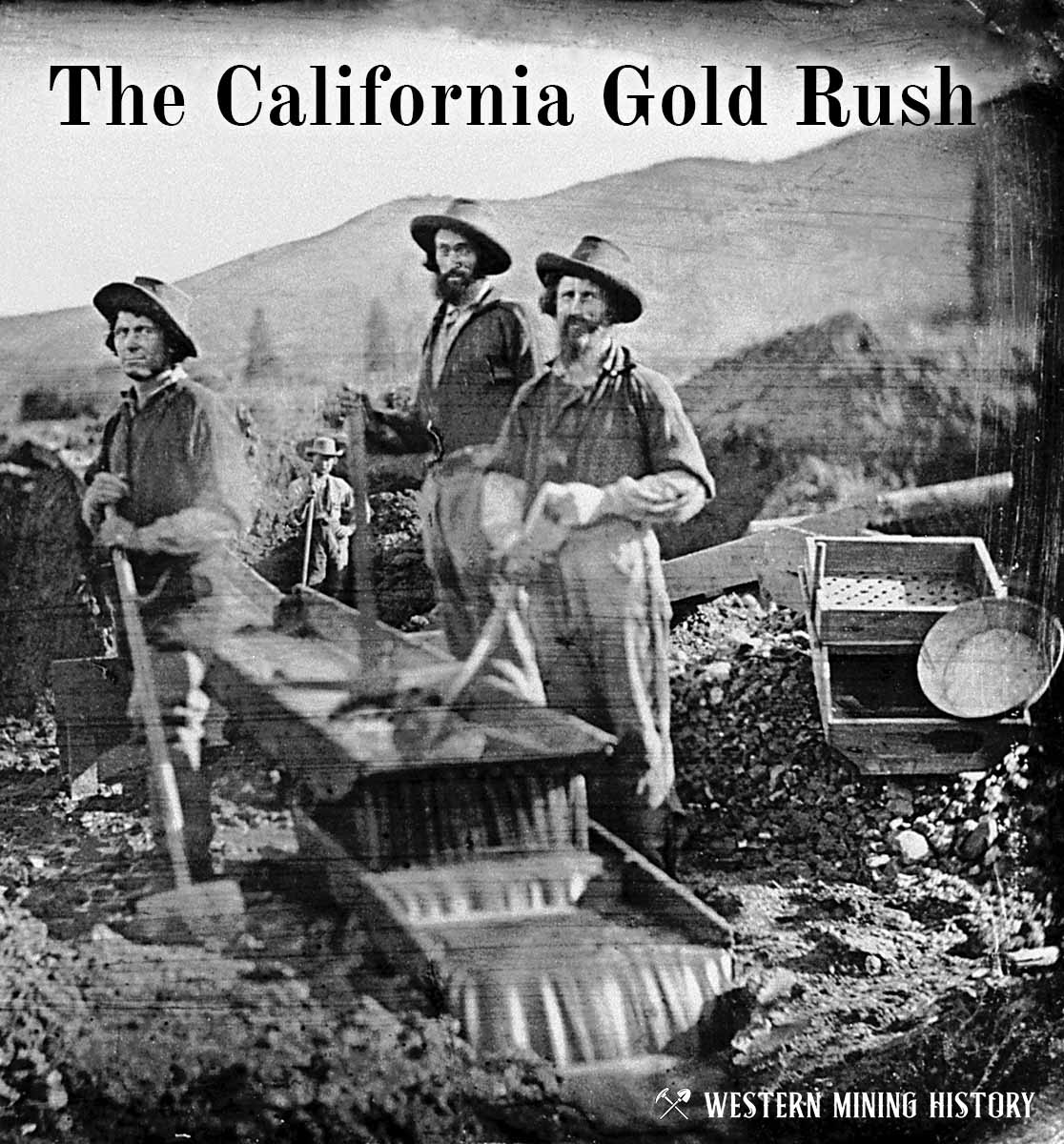
The great California Gold Rush kicked off the entire saga of western mining. Read about it at The California Gold Rush.
California Gold

"Where to Find Gold in California" looks at the density of modern placer mining claims along with historical gold mining locations and mining district descriptions to determine areas of high gold discovery potential in California. Read more: Where to Find Gold in California.
